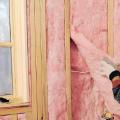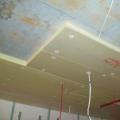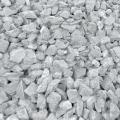Heat capacity of materials - table
In construction, a very important characteristic is the heat capacity of building materials. The thermal insulation characteristics of the walls of the building depend on it, and, accordingly, the possibility of a comfortable stay inside the building. Before you begin to familiarize yourself with the thermal insulation characteristics of individual building materials, you need to understand what heat capacity is and how it is determined.
Specific heat capacity of materials
Heat capacity is a physical quantity that describes the ability of a material to accumulate temperature from a heated environment. Quantitatively, specific heat capacity is equal to the amount of energy, measured in J, required to heat a body weighing 1 kg by 1 degree.
Below is a table of the specific heat capacity of the most common materials in construction.
- type and volume of heated material (V);
- the specific heat capacity of this material (Sud);
- specific gravity (msp);
- initial and final temperatures of the material.
Heat capacity of building materials
The heat capacity of materials, the table for which is given above, depends on the density and thermal conductivity of the material.

And the thermal conductivity coefficient, in turn, depends on the size and closedness of the pores. A fine-porous material, which has a closed pore system, has greater thermal insulation and, accordingly, lower thermal conductivity than a large-porous one.

This is very easy to see using the most common materials in construction as an example. The figure below shows how the thermal conductivity coefficient and the thickness of the material influence the thermal insulation properties of external fences.

The figure shows that building materials with lower density have a lower thermal conductivity coefficient.
However, this is not always the case. For example, there are fibrous types of thermal insulation for which the opposite pattern applies: the lower the density of the material, the higher the thermal conductivity coefficient will be.

Therefore, you cannot rely solely on the indicator of the relative density of the material, but it is worth taking into account its other characteristics.
Comparative characteristics of the heat capacity of basic building materials
In order to compare the heat capacity of the most popular building materials, such as wood, brick and concrete, it is necessary to calculate the heat capacity for each of them.

First of all, you need to decide on the specific gravity of wood, brick and concrete. It is known that 1 m3 of wood weighs 500 kg, brick - 1700 kg, and concrete - 2300 kg. If we take a wall whose thickness is 35 cm, then through simple calculations we find that the specific gravity of 1 square meter of wood will be 175 kg, brick - 595 kg, and concrete - 805 kg.
Next, we will select the temperature value at which thermal energy will accumulate in the walls. For example, this will happen on a hot summer day with an air temperature of 270C. For the selected conditions, we calculate the heat capacity of the selected materials:
- Wall made of wood: C=SudhmuddhΔT; Sder=2.3x175x27=10867.5 (kJ);
- Concrete wall: C=SudhmuddhΔT; Cbet = 0.84x805x27 = 18257.4 (kJ);
- Brick wall: C=SudhmuddhΔT; Skirp = 0.88x595x27 = 14137.2 (kJ).
From the calculations made, it is clear that with the same wall thickness, concrete has the highest heat capacity, and wood has the lowest. What does this mean? This suggests that on a hot summer day, the maximum amount of heat will accumulate in a house made of concrete, and the least amount of heat will accumulate in a house made of concrete.

This explains the fact that in a wooden house it is cool in hot weather and warm in cold weather. Brick and concrete easily accumulate a fairly large amount of heat from the environment, but just as easily part with it.
Heat capacity and thermal conductivity of materials
Thermal conductivity is a physical quantity of materials that describes the ability of temperature to penetrate from one wall surface to another.

To create comfortable indoor conditions, it is necessary that the walls have a high heat capacity and a low thermal conductivity coefficient. In this case, the walls of the house will be able to accumulate thermal energy from the environment, but at the same time prevent the penetration of thermal radiation into the room.
 Construction materials and list of works
Construction materials and list of works Proper insulation of a wooden ceiling in a private house
Proper insulation of a wooden ceiling in a private house What types of crushed stone are there?
What types of crushed stone are there?